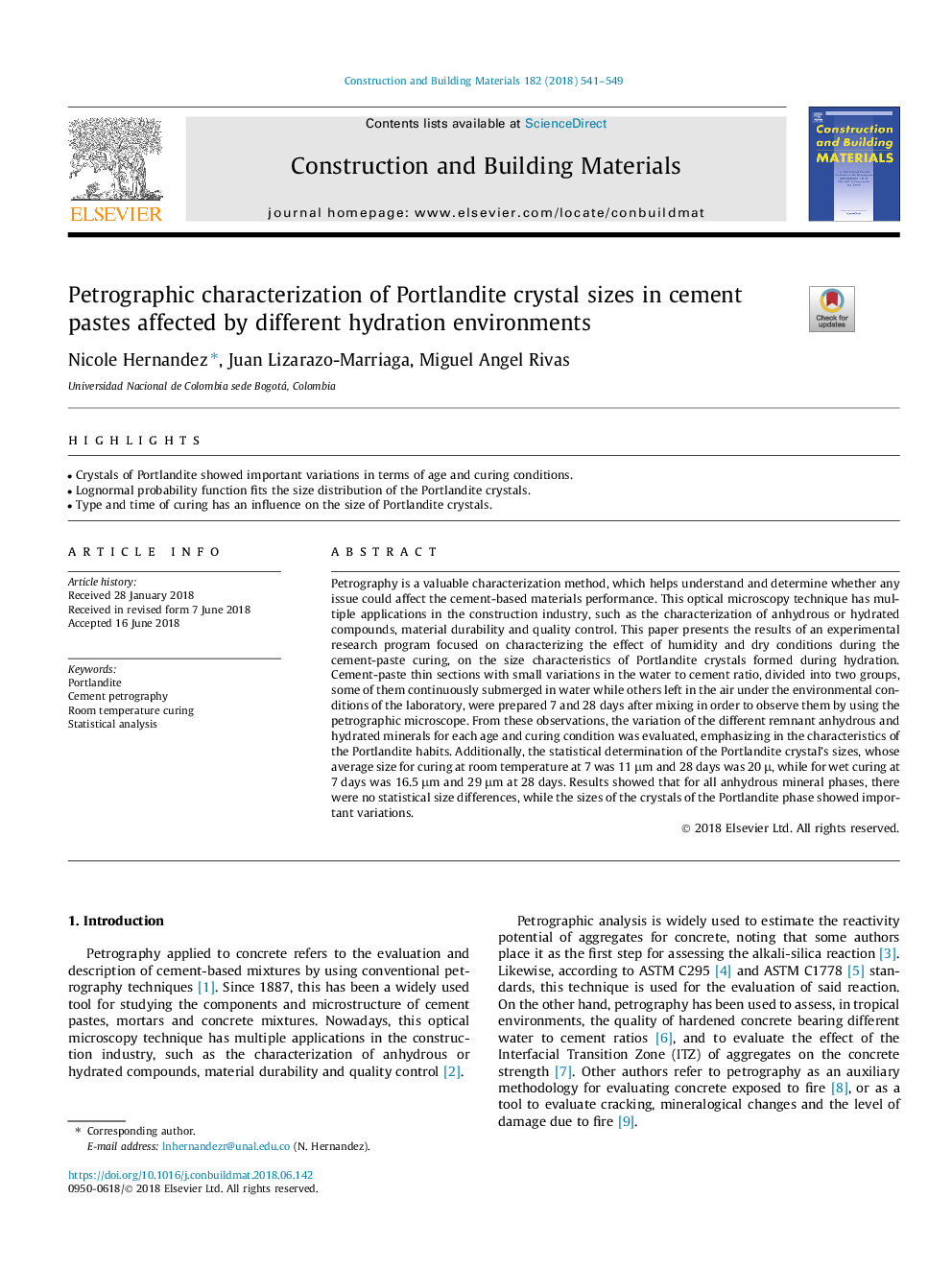| Article ID | Journal | Published Year | Pages | File Type |
|---|---|---|---|---|
| 6712280 | Construction and Building Materials | 2018 | 9 Pages |
Abstract
Petrography is a valuable characterization method, which helps understand and determine whether any issue could affect the cement-based materials performance. This optical microscopy technique has multiple applications in the construction industry, such as the characterization of anhydrous or hydrated compounds, material durability and quality control. This paper presents the results of an experimental research program focused on characterizing the effect of humidity and dry conditions during the cement-paste curing, on the size characteristics of Portlandite crystals formed during hydration. Cement-paste thin sections with small variations in the water to cement ratio, divided into two groups, some of them continuously submerged in water while others left in the air under the environmental conditions of the laboratory, were prepared 7 and 28â¯days after mixing in order to observe them by using the petrographic microscope. From these observations, the variation of the different remnant anhydrous and hydrated minerals for each age and curing condition was evaluated, emphasizing in the characteristics of the Portlandite habits. Additionally, the statistical determination of the Portlandite crystal's sizes, whose average size for curing at room temperature at 7 was 11â¯Î¼m and 28â¯days was 20â¯Î¼, while for wet curing at 7â¯days was 16.5â¯Î¼m and 29â¯Î¼m at 28â¯days. Results showed that for all anhydrous mineral phases, there were no statistical size differences, while the sizes of the crystals of the Portlandite phase showed important variations.
Keywords
Related Topics
Physical Sciences and Engineering
Engineering
Civil and Structural Engineering
Authors
Nicole Hernandez, Juan Lizarazo-Marriaga, Miguel Angel Rivas,
